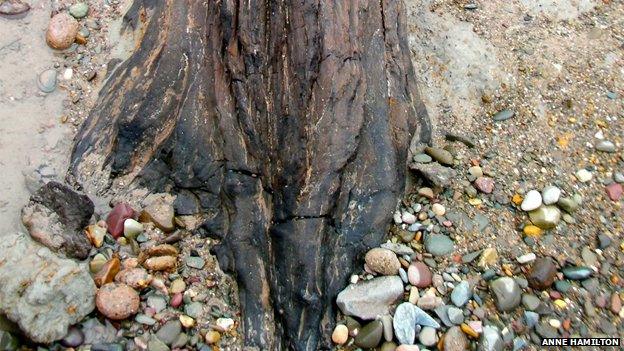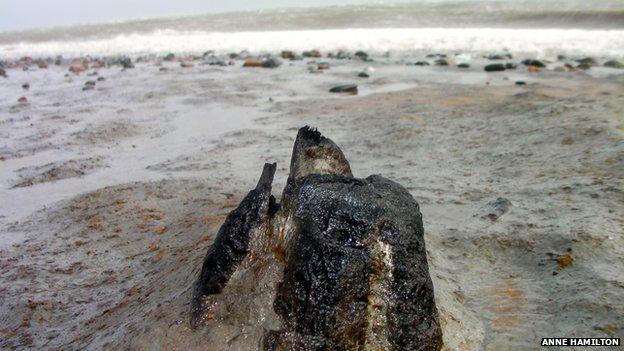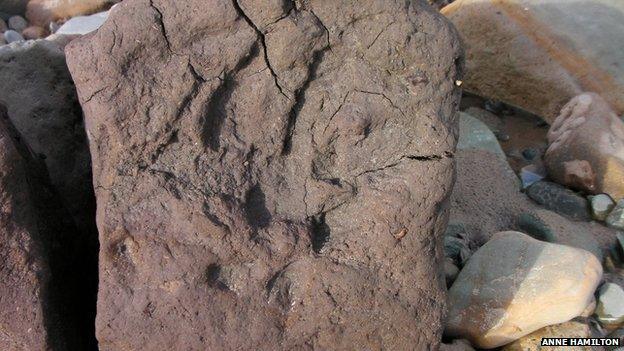Ancient 10,000-year-old trees revealed by island storms
- Published

The uncovered tree stumps have been preserved in a rich "chocolate brown coloured" layer of peat
The remains of 10,000-year-old trees have been uncovered on a beach in the north of the Isle of Man after recent storms battered the Manx coastline.
Experts said a "chaotic" collection of trunks, branches and pine cones had been discovered in the cliffs at Cranstal, just north of Bride Village.
The pine woodland had been covered by about 16ft (5m) of sand and clay.
Andrew Johnson, Manx National Heritage archaeologist, says the find "opens a window on an ancient landscape".
"The epic weather has meant the sea washed away a considerable part of the cliff and knocked it back about 5m," he said.
Ancient 10,000-year-old trees revealed by island storms
"This has exposed an extensive area of pine woodland, including pine cones, which is part of a landscape that existed about 10,000 years ago.
"Because the peat has preserved it so well, we are now able to get some samples together and get to work in the laboratory."
Experts believe the ancient pine forest would have been around at the same time people began to inhabit the Isle of Man after the Ice Age.
"At this time, we believe people were starting to move around the island, it wouldn't have been a very warm place at that time but it would have been possible to exist," Mr Johnson said.
"A few thousand years earlier though, it would have been more like Siberia."

Local resident Anne Hamilton said "the whole beach had been washed away"
Mr Johnson said work was now being done to secure permission to remove samples of the woodland to help identify other parts of organic material.
Tests will then be taken on animal and plant life found in the clay.
Local resident Anne Hamilton has been going to the beach every day to take photographs.
"I just live a few yards away and I love geology, so this has been amazing for me," she said.
"One day I just came down here and the whole beach had been washed away, I don't know where it's gone.

Ms Hamilton said the area is very popular with dog walkers and the discovery has caused much excitement
"Then bit by bit I started to see the peat and then the fallen trees started to appear, absolutely incredible, everyone's been coming down to have a look.
"I even took a photo of what looked like a dinosaur footprint the other day- I think it is from a three-toed Manxasaurus."
Manx National Heritage said that, while interest in the site is inevitable, in order for research work to be as effective as possible, members of the public are asked to leave everything in place.
- Published13 January 2014
- Published13 January 2014